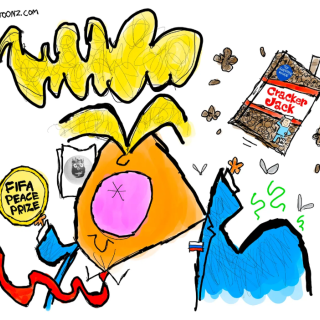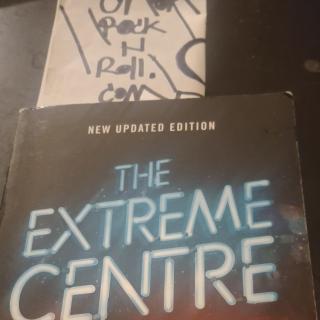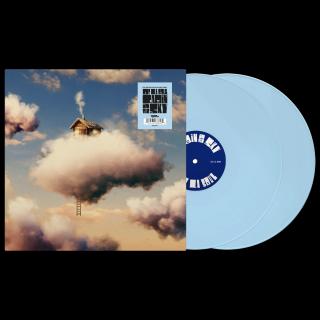Advertisement
9/8/18 - 10/27/18
Recurring weekly on Tuesday, Wednesday, Thursday, Friday, Saturday
Angela Meleca Gallery
144 E. State St., Columbus, OH 43215
(614) 340-6997
Curated by Jason Simon
With Leni D. Anderson, Mary Jo Bole, Moyra Davey, Richard Fletcher, Chester Himes, Bill Horrigan, Masumi Hyashi, William E. Jones, Logan Rollins & the 511 Jazz Ensemble, Jason Simon
The derelict Ohio State Penitentiary made the west side of downtown Columbus into a vast quiet quarry, where Spring, Neil, West and Maple streets were bounded by its 30-foot limestone walls. Inside, piles of rubble and patches of graffiti grew inside and outside its more than two dozen structures, an urban ruin of human ruin made spectacular by its monumental scale. The largest buildings, especially the stacked tiers of iron-barred cell blocks, merged the industrial and carceral decades past their function by sheer visual impact. Now Columbus’ Arena district occupies the site and any such physical evidence of the Pen is nearly invisible. Like documentary and historical artifacts, artworks and recorded impressions can also testify to an American recourse to caging people, and if such edifices were later sited less publicly, they yet function no less broadly or brutally than during the previous century.
Leni D. Anderson’s narrative paintings explore historical, religious and personal themes, often drawing from public events and records, including those of the Ohio Pen. Combining narrative techniques with found elements and sources, his serialized canvases chronicle his reflections upon charged social contexts. While his best-known series combine styles of medieval icon painting with text, To What Red Hell presents pastel studies of the geometric interiors of the Pen, and a single large bricolage painting using Ohio Pen death row photographs (mug shots). While the studies are delicate depopulated grids, the painting abounds with faces too familiar with the institution: Anderson is attendant to both the structure and the lives it held.
Two of Mary Jo Bole’s sculptural interventions enact and elaborate the mechanics of waste within the infrastructures of prisons. A section of cast brass plumbing emerges across a corner as conduit of what is shunned, while a profusely illustrated prison door catalogues the intricacies of prison toilets. Bole indicates these industrial forms as sites of control, content-rich in the most visceral of ways, and where she can exercise her reclamation. By exhuming precisely what is never wanted, Bole suggests that any human valuation can be subject to a radical rethinking.
Masumi Hyashi collages hundreds of prints that flatten the view from a central vantage point within the abandoned prisons and internment camps she photographed, placing her technique of the panorama within the history of the panopticon. “The viewer becomes both prisoner and guard within the photograph’s memory” she said. Born in the Gila River Relocation Camp in 1947, Hyashi returned to these sites of national betrayal, including the Ohio Pen, throughout her career.
Moyra Davey visited the Ohio Pen while teaching for a year at OSU in 1990 and produced roughly two dozen photographs contrasting the Pen’s decorated Italianate edifice with the crumbling walls, confessionals, cell blocks, and all other menacing visibilities past purpose. Davey folded and sent them through the US Postal Service to the current exhibition, addressing them to the other participants in To What Red Hell, hinting at collective memory as a means for navigating histories of the inhumane.
William E. Jones’ 16mm film Tearoom is shown nearly exactly as he found it: “In the summer of 1962, the Mansfield, Ohio, Police Department photographed men in a restroom under the main square of the city. The cameramen hid in a closet and watched the clandestine activities through a two-way mirror. The film they shot was used in court as evidence against the defendants, all of whom were found guilty of sodomy, which at that time carried a mandatory minimum sentence of one year in the state penitentiary.” Jones’ work presents the radical democracy of clandestine public sex as a kind of origin story of the surveillance state, which distributed the film as a police weapon.
“In and Around the Ohio Pen” is a portrait of friendship cued by the prison site. The Super-8 film is in two parts, outside and inside, where Wexner Center curator Bill Horrigan joined a tour of the pen in 1990. On the soundtrack is original music by his occasional yet closest collaborator, the renowned filmmaker Chris Marker. After Marker died in 2012, the sound was married to the image in tribute to their working history and dialog. In the middle of the film, after a spontaneous enactment of George Herriman’s Ignatz Mouse signature brick toss, from his comic Krazy Kat, Horrigan quips: “it’s our future: incarceration”.
The exhibition title, To What Red Hell, is taken from the short story by Chester Himes published in Esquire in 1934, after he survived the 1930 fire in the Pen that killed 322 prisoners and wounded hundreds of others. Himes’ story is available as a handout combined with an exchange between OSU scholar Richard Fletcher and Horrigan, who also suggested the title. The original Esquire magazine is on display, along with the album Hard Luck Soul, which can be heard in the gallery. Composed, arranged and performed by Logan Rollins, nephew of Sonny Rollins, and his 511 Jazz Ensemble, while all were inmates in the Pen, Hard Luck Soul was recorded by members of the OSU Jazz Ensemble in the penitentiary chapel in 1971. Like Himes’ story, Hard Luck Soul came not from outside or after the Pen, but from within its walls, by artists who managed to defy the very structure that contained them.
“We who are artists know that any culture worthy of the name blossoms with the growth of the individuals and dies under Fascism. Let it be said then that the democracies fight for the equality of races and opportunity and the freedom of culture everywhere”. – Isamu Noguchi, writing in Readers Digest, May 1942, while voluntarily self-interned in order to teach art, and subsequently involuntarily interned by the United States Defense Force, in Poston Relocation Center, Arizona.
- -
Leni D. Anderson, lives and works in Columbus, Ohio; MJ Bole, lives and works in Columbus, Ohio; Moyra Davey, lives and works in New York City, New York; Richard Fletcher, lives and works in Columbus, Ohio; Chester Himes, deceased; Bill Horrigan lives and works in Columbus, Ohio; Masumi Hayashi, deceased; William E. Jones, lives and works in Los Angeles, California; Logan Rollins, deceased; Jason Simon, lives and works in New York City, New York.



